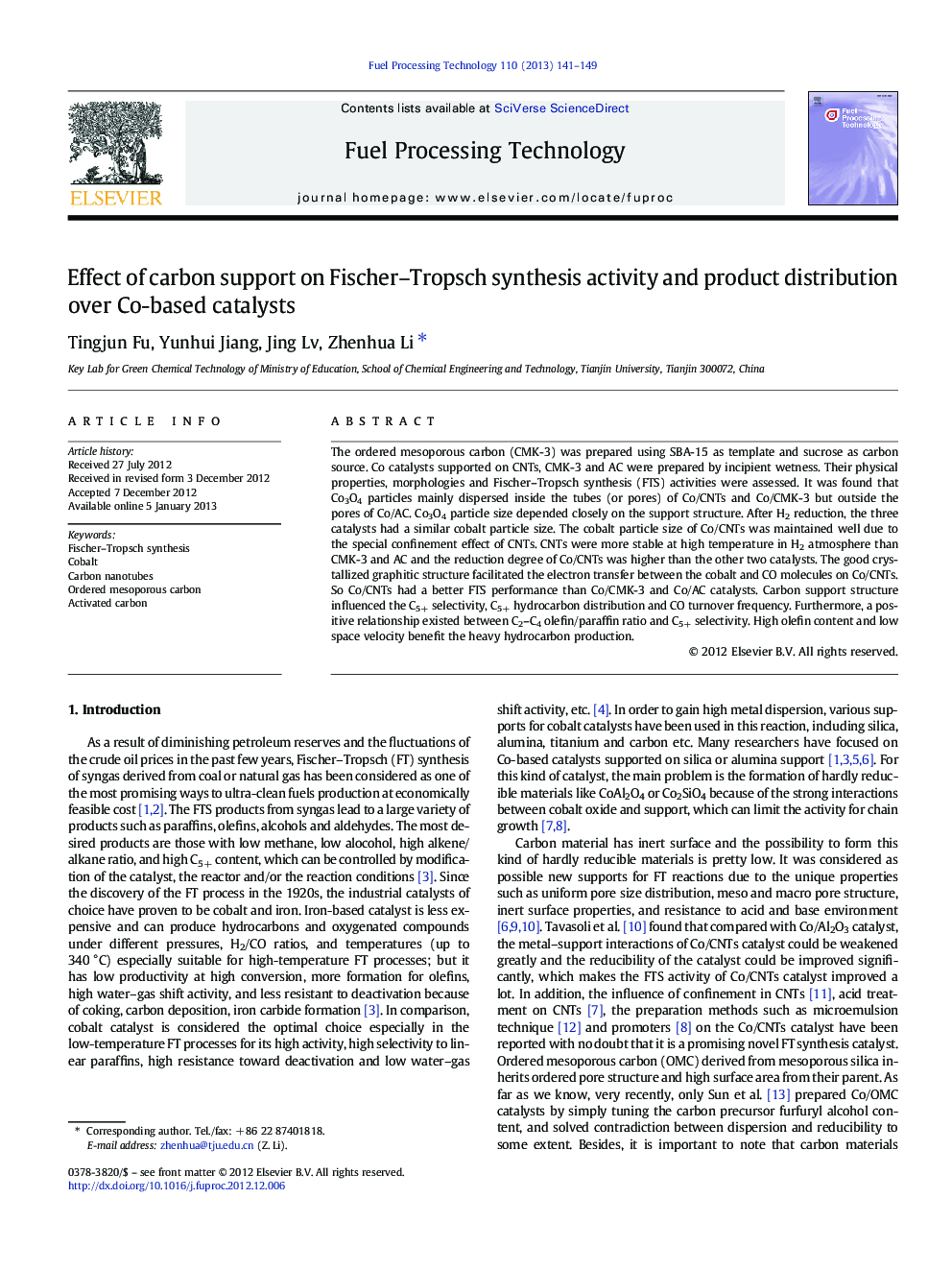| کد مقاله | کد نشریه | سال انتشار | مقاله انگلیسی | نسخه تمام متن |
|---|---|---|---|---|
| 209991 | 461695 | 2013 | 9 صفحه PDF | دانلود رایگان |

The ordered mesoporous carbon (CMK-3) was prepared using SBA-15 as template and sucrose as carbon source. Co catalysts supported on CNTs, CMK-3 and AC were prepared by incipient wetness. Their physical properties, morphologies and Fischer–Tropsch synthesis (FTS) activities were assessed. It was found that Co3O4 particles mainly dispersed inside the tubes (or pores) of Co/CNTs and Co/CMK-3 but outside the pores of Co/AC. Co3O4 particle size depended closely on the support structure. After H2 reduction, the three catalysts had a similar cobalt particle size. The cobalt particle size of Co/CNTs was maintained well due to the special confinement effect of CNTs. CNTs were more stable at high temperature in H2 atmosphere than CMK-3 and AC and the reduction degree of Co/CNTs was higher than the other two catalysts. The good crystallized graphitic structure facilitated the electron transfer between the cobalt and CO molecules on Co/CNTs. So Co/CNTs had a better FTS performance than Co/CMK-3 and Co/AC catalysts. Carbon support structure influenced the C5+ selectivity, C5+ hydrocarbon distribution and CO turnover frequency. Furthermore, a positive relationship existed between C2–C4 olefin/paraffin ratio and C5+ selectivity. High olefin content and low space velocity benefit the heavy hydrocarbon production.
► Co/CNTs exhibits better FTS performance than Co/AC and Co/CMK-3.
► Carbon support structure influences the reactivity and product distribution of FTS.
► A positive relation exists between C2–C4 olefin/paraffin ratio and C5+ selectivity.
► High olefin content and low space velocity benefit the heavy hydrocarbon formation.
Journal: Fuel Processing Technology - Volume 110, June 2013, Pages 141–149